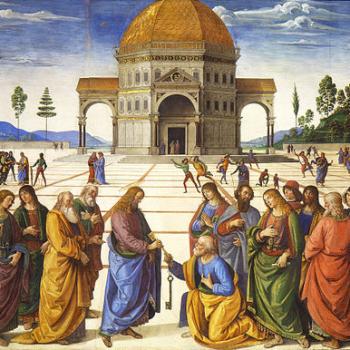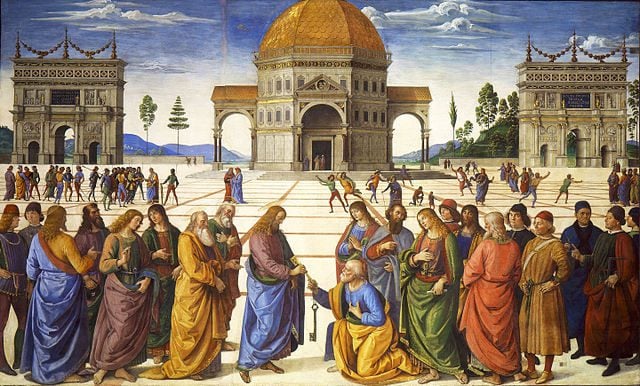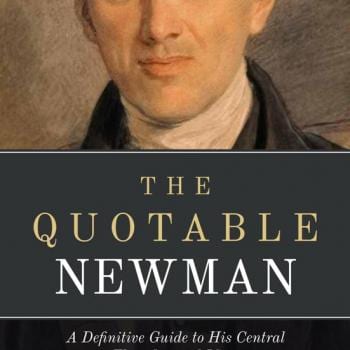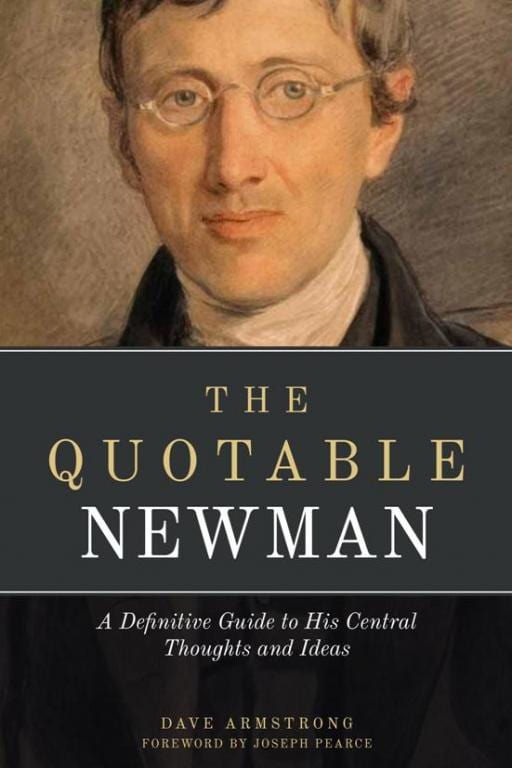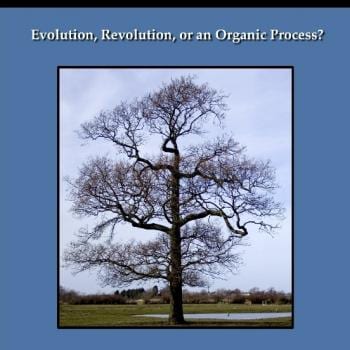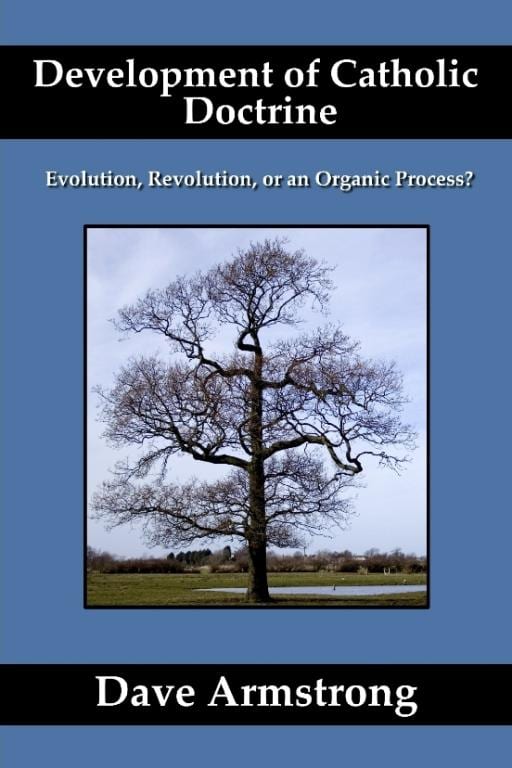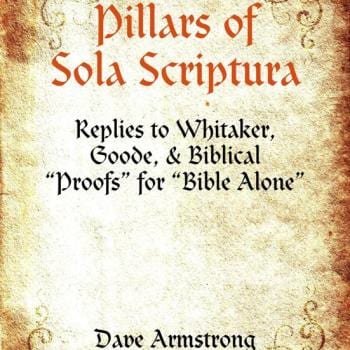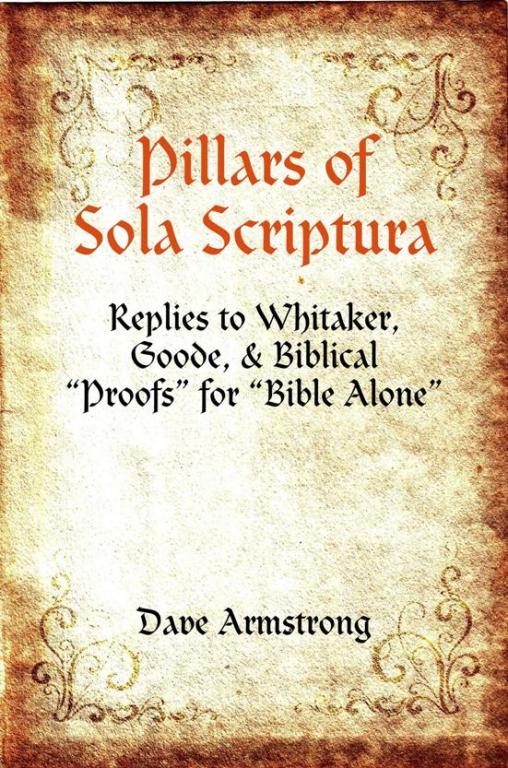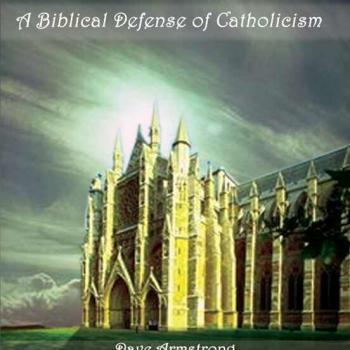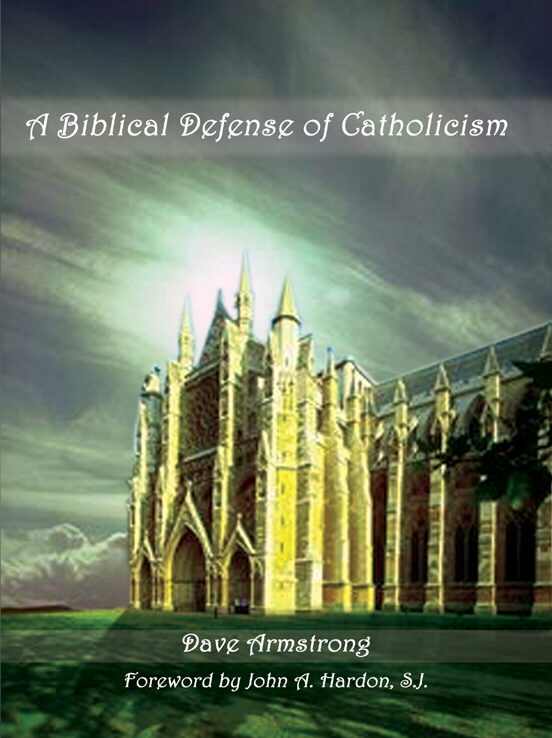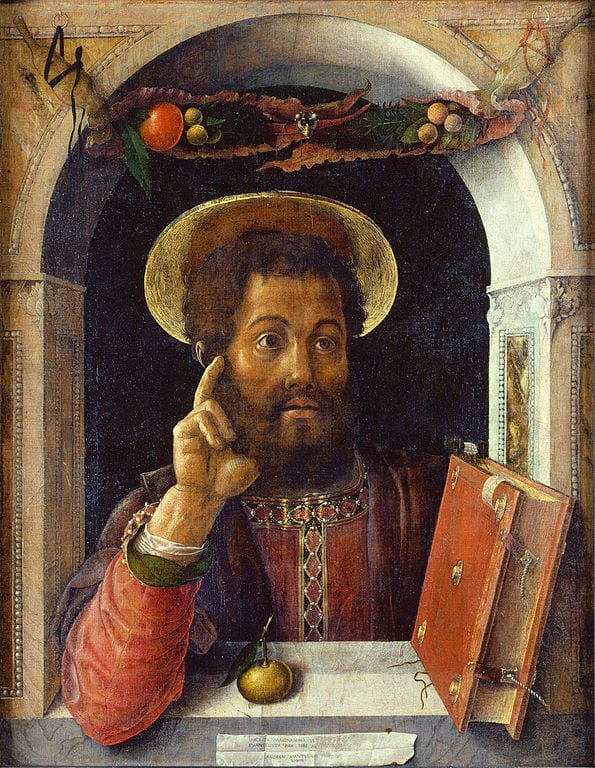“From Noah to Joshua”: the Hebrew Scripture is Extraordinarily Accurate & True to History
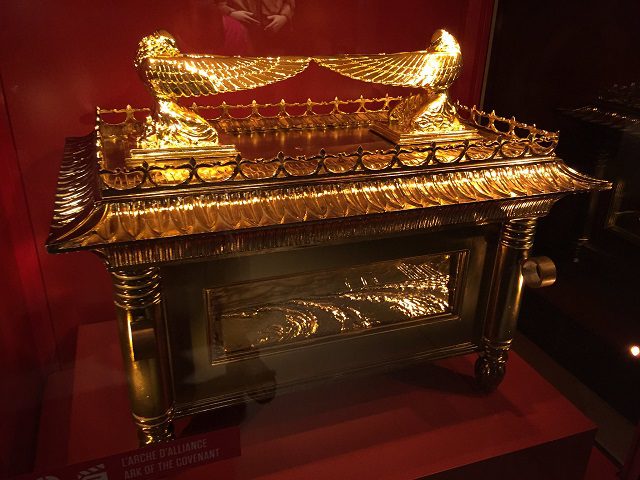
For preliminary background information on the dispute about biblical maximalism vs. minimalism, and the dates of the patriarchs and major OT events, see my article on those topics. This paper is basically a chronological “bullet-point” survey of some of the fascinating things I have found in studying archaeology (and in several cases, science in general) in relation to the Old Testament over the last six months or so (originally stimulated by atheist skepticism).
Nothing is very in-depth; however, I will systematically provide links to the papers that do deal in greater depth with any given topic. Readers, therefore, may peruse the overall topic as much as they like by following the links to more substantial treatments, extensive documentation from scientific studies, etc.
*****
Three Great Books About Biblical Archaeology (Maximalist Outlook)
Kenneth A. Kitchen (b. 1932), On the Reliability of the Old Testament (Grand Rapids and Cambridge: William B. Eerdmans Publishing Company, 2003)
James K. Hoffmeier (b. 1951), Israel in Egypt: The Evidence for the Authenticity of the Exodus Tradition (Oxford University Press, 1996)
James K. Hoffmeier, Ancient Israel in Sinai: The Evidence for the Authenticity of the Wilderness Tradition (Oxford University Press, 2005)
***
1) Noah’s Ark & the Flood
a. I have compiled an extensive scientific argument for a local Flood in the Mesopotamian plains, near the Tigris and Euphrates rivers (present-day Iraq). The Bible doesn’t require a universal Flood. This was noted as early as the old Catholic Encyclopedia from 1910.
b. At Shuruppak and Uruk in this area, can be found clay deposited by a flood: nearly two feet and five feet thick, respectively: dated at approximately 2900 BC. The Sumerian King List [22nd-21st c. BC] informs us that Noah (Ziusudra) lived in Shuruppak [Tell Fara]”: excavated back to 3,000 BC.
c. The traditional landing-site of the ark (up till the 11th century) was not the current Mt. Ararat, but rather, Jabel Judi (just north of the flat floodplain), which is 6,854 feet in elevation. The biblical text doesn’t require the ark resting on top of a mountain. It says “came to rest upon the mountains of Ar’arat” (Gen 8:4), in other words, a region. The Mt. Ararat in present-day Turkey near Armenia wasn’t even known by that name until the Middle Ages.
d. Noah’s Ark, built (as we deduce from many historical clues) in the Mesopotamian plain, was covered “inside and out with pitch” [same thing as bitumen / tar / asphalt] (Gen 6:14). We know that this was readily available in the area at this time: used as waterproofing for reed boats on the Euphrates by the early 4th millennium BC (early 3000s).
e. Wood for the ark wasn’t available locally, but we know that wood was available for trade and purchase by 2900 BC in Syria, Elam (now Iran), and Anatolia (Turkey): floated down the Euphrates River. It was likely either cedar or cypress.
f. One skeptical argument against Noah’s Ark is the taunt that the carnivores would have insufficient food. This is answered in many ways. There is salt-cured meat and dried and salted cod. The Wikipedia article “Food Drying” notes that “Dehydration has been used widely for this purpose since ancient times”: many thousands of years before Noah’s Ark.
g. There is a significant analogy between my proposed local Mesopotamian flood and the Great Mississippi Flood of 1927. The latter had: 1) sustained heavy rain for six times as long as the biblical flood (240 days to 40), 2) flood waters remaining for a year, compared to 10 1/2 months in Genesis, and 3) coverage over an area larger than my proposed local Mesopotamian flood (likely twice as large or more). Moreover, 1) both are (in the costal areas) very flat, 2) lie near a large body of water (Gulf of Mexico / Persian Gulf), 3) have a large river or rivers running through them (Tigris & Euphrates / Mississippi), 4) probably have similar climates as well (without verifying it, but they are located virtually at the same latitude), 5) both have “rings” of mountains or much higher elevations around the flat basin and flood plain on three sides: in the US South there are mountains in Arkansas, Tennessee, and northern Alabama and Georgia.
2) The Tower of Babel
a. Genesis 11:2-3 (RSV, as throughout) And as men migrated from the east, they found a plain in the land of Shinar and settled there. [3] And they said to one another, “Come, let us make bricks, and burn them thoroughly.” And they had brick for stone, and bitumen for mortar.
b. Four historical clues: i) Shinar: early word for Babylon, ii)”Plain”: Mesopotamian floodplain, iii) burned bricks = kiln-fired bricks, iv) bitumen for mortar.
c. Ziggurats: about 25 in ancient Sumer, Babylonia, and Assyria: the earliest dated to 3500 BC at the latest.
d. In the ancient Near East, and also anywhere else in the world, baked bricks were “rarely used in architecture until c. 3100 B.C.”
e. As for bitumen, the Anu Ziggurat in Uruk (modern Warka) — built in c. 3517-3358 BC. — was coated on its top with bitumen and overlaid with brick.
For much more information, see: Tower of Babel, Baked Bricks, Bitumen, & Archaeology (Also, Archaeological Verification of Sufficiently Available Bitumen and Wood for the Building of Noah’s Ark)
3) Abraham and “Anachronistic” Camels
[Kitchen thinks Abraham was “born . . . earlier in the nineteenth century at the latest”: i.e., 1800s BC]
Mention of Abraham and camels is made in Genesis 24. Apparently, he received them from the Pharaoh of Egypt (Gen 12:16). This has been claimed as historical anachronism, but excavations have shown that the presence of camels in Egypt dates back at least to the First Dynasty (3100 B.C.) with domestication preceding the age of the patriarchs. Orthodox rabbi Joshua Berman stated: “read Genesis carefully and you see that all its camels come from outside of Israel, . . . nowhere in Genesis does anyone ride a camel originating in Canaan.” Genesis 42:26-27 shows us that Joseph’s brothers went to Egypt on donkeys (cf. 43:24; 44;3, 13; 45:23). Further reading: Abraham, Moses, Camels, & Archaeological Evidence and OT Camels & Biblically Illiterate Archaeologists.
The consensus atheist skeptics and archaeologists is that domestication of camels in Israel occurred in the 9th century BC. The Bible (rightly understood) agrees. 1 Chronicles 5:21 notes that camels were owned by the Hagrites (5:19), who lived east of Gilead in present-day Jordan. Note that the Israelites “carried off fifty thousand of their camels” (5:21): certainly enough to start widespread domestication in Israel. This was “in the days of Jerobo’am king of Israel” (5:17). Jeroboam was the first king of the northern kingdom of Israel (as opposed to Judah). He reigned for 22 years, sometime in the last third of the 10th century BC. In other words, this was right before the first archaeological evidence of widespread camel use in Israel, in the 9th century BC. Further reading: When Were Camels Domesticated in Egypt & Israel?
4) Abraham’s Journeys
His presence at Beersheba is said to be an anachronism, as the city didn’t exist in his lifetime. But the Bible refers to it as “the wilderness of Beer-sheba” (Gen 21:14) in Abraham’s time. It’s never called a “city” in eleven times in Genesis, save for 26:33, which is clearly a later added editorial note (“the name of the city is Beer-sheba to this day”). See: Abraham & Beersheba, the Bible, & Archaeology. He lived in Haran (Gen 11:31; 12:4-5). It’s known from cuneiform sources, in both Eblaite and Akkadian, to date back to 3000 BC. See: Abraham Lived in Haran, Which Did Exist at the Time! Abraham was in Shechem (Gen 12:5-6; 33:18). Archaeology shows that it was re-settled c. 1900 BC, just before Abraham was born. See: Abraham’s Shechem Lines Up With Archaeology. Abraham dwelt at Hebron (Gen 13:18; 23:2, 19; 35:27). Archaeology tells us that it was established c. 2700-2200 BC, destroyed by fire but rebuilt c. 1800 BC: all long before Abraham’s birth. See: Abraham & Hebron: Archaeology Backs Up the Bible. Abraham met Melchizedek in Salem (Gen 14:17-18): believed by most Bible scholars to be Jerusalem, and was willing to sacrifice Isaac on Mt. Moriah: where the temple was later built (Gen 22:2). Is that too early? No problem. Archaeology holds that the city was first established no later then 3500 BC, if not much earlier and rebuilt, c. 1800 BC. See: Abraham, Salem, Mt. Moriah, Jerusalem, & Archaeology.
5) Sodom and Gomorrah
Sodom and Gomorrah were destroyed in Abraham’s time (Gen 19:24-29). Recent excavations highly suggest that it was located north and east of the Dead Sea, rather than further south (Tall el-Hammam in Jordan). The most interesting thing about the excavations is evidence of a possible meteor explosion in the area, dated to 1750-1650 BC. A pottery sherd found on the site melted under extreme temperatures, and has a glass surface as a result. See: Sodom & Gomorrah & Archaeology: North of the Dead Sea? and Was Sodom Destroyed by a Meteor in Abraham’s Time?
6) Joseph: Sold Into Slavery
[Kitchen estimates that the patriarch Joseph was born c. 1737-1717 BC]
Genesis 37:25, 28 . . . looking up they saw a caravan of Ish’maelites coming from Gilead, with their camels bearing gum, balm, and myrrh, on their way to carry it down to Egypt. . . . [28] Then Mid’ianite traders passed by; and they drew Joseph up and lifted him out of the pit, and sold him to the Ish’maelites for twenty shekels of silver; and they took Joseph to Egypt.
Atheists try to deny that this trade route existed at this time (1720-1710 BC). The beginnings of this incense trade and the Incense Road have been dated to 1800 BC (prior to Joseph’s birth). Egypt (not far away) had been importing myrrh from further south in Africa for the previous thousand years. Genesis 37:17 informs us that the incident where Joseph was traded into slavery occurred at Dothan (now the archaeological site Tel Dothan, which is roughly in the middle on a line between the sea of Galilee and Tel Aviv. Dothan was located on a different trade route, later called the Via Maris. The Wikipedia article on it states that it dated “from the early Bronze Age“: which age in Mesopotamia lasted from c. 3300–1200 BC. See: Genesis, Joseph, Archaeology, & Biblical Accuracy.
The price of slaves in the ancient Near East from 2000-1400 BC (we know from various texts) was 20 shekels: exactly what the Bible states Joseph was sold for in the early 18th century. After that it became 30 shekels. If this story was written in the 6th BC or later, as skeptics claim, the price would have been 90-100 shekels: the going rate at that time. See: Joseph in Egypt, Archaeology, & Historiography.
7) Joseph: Investiture
Genesis 41:41-42 And Pharaoh said to Joseph, “Behold, I have set you over all the land of Egypt.” [42] Then Pharaoh took his signet ring from his hand and put it on Joseph’s hand, and arrayed him in garments of fine linen, and put a gold chain about his neck;
[Donald] Redford . . . [analyzed] over forty scenes spanning from the reign of Thutmose III to the Twenty-first Dynasty (ca. 1479-950 B.C.). These scenes typically show the king sitting on a throne, often under a canopy, while the recipient stands before the monarch wearing a gold necklace and adorned in white linen. . . . An important diagnostic feature of investiture scenes is the presence of some sort of insignia of the new office (standard, staff, or seal). . . . (Hoffmeier, Israel in Egypt, 91)
Huy, Viceroy of Cush under Tutankhamun . . . [is shown] receiving a rolled-up linen object along with a gold signet ring. (Hoffmeier, ibid., 92)
Of the Egyptian nature of the trappings for royal appointments to high office — linen robe, gold collar, state seal, etc. – there can be no doubt whatever. (Kitchen, 478). See: Joseph in Egypt, Archaeology, & Historiography.
8) Pitch for Baby Moses’ Basket?
[Moses’ birth and death dates, deduced by Kenneth Kitchen, are c. 1340-c. 1210 BC]
[see Ex 2:2-3]
I discovered an atheist making a claim that got me started on this lengthy excursion into biblical archaeology (thanks much!). He said, “pitch was not available in Egypt at the time of Moses, but was in Sumeria.” Even he conceded that it was available somewhere at the time. Bitumen and pitch are essentially synonymous terms (tar and asphalt also similarly used). Lo and behold, it turns out that bitumen was available in Egypt by trade at this time. A 1992 scientific article concluded:
This study is the first evidence of the trade and export of raw bitumens from the Dead Sea area within Canaan and to Egyptian trading centers on the mainland route to Egypt between 3900 and 2200 BC . . .
This study demonstrates that detailed organic geochemical analysis permits the identification in Maadi excavations (3900-3500 BC) in Egypt of asphalt imported from the Dead Sea and enables the reconstruction of the bitumen trade routes within Canaan and to Egypt.
See: No Pitch / Bitumen in Moses’ Egypt? and Atheist Throws a Screwball Pitch (Part II of “Pitch / Bitumen in Moses’ Egypt”).
The same article also noted that bitumen is found in Egypt itself:
[A]sphalt is found in only a few localities in Egypt (in oil springs at Jebel Zeit, termed Mons Petrolius by the Romans, or in sandstones at Helwan, south of Cairo; . . .
Our atheist friend had also wrongly concluded: “Contrary to Moses [sic] account, bitumen does not exist in the Nile river or the Nile delta.” Wrong! Helwan “is part of Greater Cairo, on the bank of the Nile”, and its delta begins just 12 miles north of Cairo (20 kilometers).
9) Hebrew Slaves in Pi-Ramesses
[see Gen 47:11; Ex 1:11; 12:37; Num 33:3, 5]
Pharaoh Ramesses II (1279–1213 BC) built a new capital Pi-Ramesses at Qantir, near the old site of Avaris on the then-easternmost branch of the Nile. Archaeology has determined that it had a population of over 300,000, and was 3.7 miles long by 1.9 miles wide. This Pelusiac branch of the Nile began silting up c. 1060 BC, leaving the city without water, at which time the capital was moved to Tanis, 12 miles away. Thus, the name used in the Bible fits the time period (roughly 210 years) perfectly. See: City of the Exodus (Pi-Ramesses), Bible, & Archaeology.
10) Hebrews Build Pithom
Exodus 1:11 . . . they built for Pharaoh store-cities, Pithom and Ra-am’ses.
Archaeological consensus appears to be that Tell el-Retaba is the site of ancient Pithom. Wikipedia elaborates: “Here was found a group of granite statues representing Ramesses II, two inscriptions naming Pr-Itm (Temple of Atum), . . .”
Polish-Slovakian excavators in 2017 concluded: “In the 13th century BC, during the reign of Ramesses II, a fortress surrounded by ‘Wall 1’ was established.” As for the biblical reference to “store-cities” the researchers described various structures on the site that would be consistent with that notion, such as “stables for animals”, “granaries”, “burial chambers”, and “small silos.”
Thus, we see that the Bible is dead-on accurate as to: 1) the name, 2) its function as a store-city, and 3) its being built (or technically, rebuilt / fortified) at the same time as the reign of Ram’eses. See: Moses’ “Store-City” Pithom & Archaeology.
11) Hebrew Slaves, Mud Bricks, and Straw
Exodus 5:6-8, 18-19 The same day Pharaoh commanded the taskmasters of the people and their foremen, [7] “You shall no longer give the people straw to make bricks, as heretofore; let them go and gather straw for themselves. [8] But the number of bricks which they made heretofore you shall lay upon them, you shall by no means lessen it; . . . [18] Go now, and work; for no straw shall be given you, yet you shall deliver the same number of bricks.” [19] The foremen of the people of Israel saw that they were in evil plight, when they said, “You shall by no means lessen your daily number of bricks.”
Straw (we know from archaeology) was added to the standard mud bricks in ancient Egypt because it reduced shrinkage and prevented cracking. About a half pound of straw was needed per cubic foot of mud. A leather scroll from Ramesses II’s reign and a papyrus Merneptah’s reign [1213-1203 BC] refer to brick making. According to the scroll, the daily quota was 2,000 mud bricks. See: Egyptian Mud Bricks and Straw: Bible = Archaeology.
12) How Many Hebrews Left Egypt in the Exodus?
[Egyptologist Kenneth Kitchen’s estimated date of the Exodus is c. 1260-1250 BC]
Several sources indicate that Pi-Ramesses had 300,000 people. One scholar (John Madden) estimated that slaves in Egypt were never more than 10% of the population. Madden cited other scholars who thought the number was closer to 13.5% (40,500), while physicist Colin Humphreys concluded (by analysis of odd use of numbers in the early books of the Bible, and the concurrence of three other credentialed Bible scholars) that the number leaving in the Exodus was 20,000 (6.7%). Averaging the three estimates, we get 30,167, or almost exactly one-tenth of the population of Pi-Ramesses (back to Madden’s guesstimate). See: Archaeology: How Many Hebrew Slaves in Pi-Ramesses? (And Could 20,000 Nomadic Hebrews Survive in the Sinai Desert for Forty Years?)
The Bible refers to about 600,000 men leaving in the Exodus, which is really approximately two million people total. This has long been a loud skeptical objection to the Exodus story. As we have seen, this would be almost seven times the estimated population of the city they departed from. But if those numbers aren’t literal, the overall equation changes quite a bit, and the data fits nicely. See: How Many Israelites in the Exodus? On the question of biblical numerology, see also: 969-Year-Old Methuselah (?) & Genesis Numbers
13) How Could 20,000 Nomads Survive in the Sinai Peninsula?
They could. How do we know that? It’s because we have an analogous group of people today: the portion of Bedouins who are still nomadic: about 115,000 in the Negev Desert: the southern portion of Israel that is similar in topography and arid climate to the neighboring Sinai Peninsula. The Negev is 4700 square miles in area, whereas the Sinai Peninsula is 23,166 square miles, or 4.93 times larger. The ancient wandering Hebrews had 29 times more area to live in than the current-day Bedouins, in similar conditions and an estimated six times fewer people. This is a non-issue. See: Archaeology: How Many Hebrew Slaves in Pi-Ramesses? (And Could 20,000 Nomadic Hebrews Survive in the Sinai Desert for Forty Years?).
14) Quails in Sinai: Possible and Plausible Natural Explanation
[see Ex 16:11-13; Num 11:4-5, 13, 18-20, 31-34; Ps 78:26-31]
Kenneth Kitchen noted observable migration patterns of quail:
Twice on their travels (down to, and up from, Mount Sinai), the Israelites got involved with migrating quail. The first time, in the Desert of Sin (west coast; Exod. 16:13) [should be 16:1], quail alighted one spring evening [“on the fifteenth day of the second month”: also 16:1]; the second time, again in the spring (Num. 11:31-34; date, cf. second month, 10:11) [“second month, on the twentieth day”], a flight of quail was blown the few miles inland (up the seaward end of Wadi Sa’l?) and fell to the Israelites. It is a fact that quails do migrate via Sinai twice a year. They fly from farther south up to Europe in the spring, going through the Suez and Aqaba gulfs in the evenings (hence their presence on the Sinai Peninsula’s west and east flanks then). (p. 273)
Thus, the Bible informs us that (again, positing a natural event):
1) quails migrate through the Sinai Peninsula,
2) particularly along the coastlines, and
3) they do so in the spring.
Season (down to the day) and specific places are both recorded. A map of quail distribution from the Birdlife International website, shows that one area is the west coast of the Sinai Peninsula (between the words “Egypt” and “Israel” on the map): precisely where the biblical accounts locate them. It involves scores of millions of birds every year. The second Hebrew month is Iyar, which usually falls into April-May of the Gregorian calendar.
Another article from Birdlife International (3-21-19) states that “Having journeyed across the sea they fly low, heading for a place to rest . . ” This may coincide with the description of Numbers 11:31: “a wind from the LORD,. . . brought quails from the sea, and let them fall beside the camp, . . . about two cubits above the face of the earth.” A biblical cubit is about 19-23 inches.
Thus, this passage could be saying that they were flying 38-46 inches above the ground (3’2″ to 3’10”), alongside the sea, as the article, says, looking for a place to pitch. If so, it’s yet another of innumerable examples of minute (in this case, botanical or ornithological) biblical accuracy, from about 3,300 years ago.
Scholars speculate as to what caused the “very great plague” resulting from eating quail, up to and including death (Num 11:33-34). Numbers 11:32 describes what seems to be a drying-out of the quail: “they spread them out for themselves all around the camp.” Before long, bacteria would develop; likely a variety of Salmonella, leading to severe sickness and even death. See: Quails, Wandering Hebrews, & Biblical Accuracy.
15) Location of Mt. Sinai
Jebel Musa (or Jabal Musa or Gebel Musa: “Mount Moses”) in the Sinai Peninsula is the leading candidate for the biblical Mt. Sinai. Jebel Musa and Ras es-Safsafeh sit at opposite ends of a three-mile long granite ridge. Ras es-Safsafeh (or Gebel Safsafeh or Willow Peak) also has much in its favor. Holman Bible Dictionary (“Mount Sinai”) states:
Ras es-Safsafeh (6,540 ft.) [lies] on the north, northeast of Jebel Musa. Many explorers think Ras es-Safsafeh is the biblical Sinai because it has a plain, er Rahah , on its northwest base, which is two miles long and about two thirds of a mile wide. This plain was certainly large enough to accommodate the camp of the Israelites.
The er-Rahah plain is adjacent to Ras es Safsafeh, not Gebel Musa. The Bible states that “Israel camped there in front of the mountain” (Ex 19:2, NRSV; cf. NIV, NASB, Moffatt, REB, Confraternity, NAB, Goodspeed: “in front of”; Amplified: “at the base of”; Knox: “in full view of”; NEB: “opposite the mountain”).
Secondly, the top of Ras es-Safsafeh, unlike that of Jebel Musa, can be seen from the plain, which the Bible requires:
Exodus 19:11 . . . on the third day the LORD will come down upon Mount Sinai in the sight of all the people.
Exodus 24:17 Now the appearance of the glory of the LORD was like a devouring fire on the top of the mountain in the sight of the people of Israel.
Thirdly, Jebel Musa has an indistinct border at its base, making it difficult to determine where it begins, so as to not be killed for touching it: as a matter of ritual impurity (Ex 19:12). Ras es-Safsafeh, on the other hand, rise abruptly and dramatically from the plain, much like El Capitan in Yosemite National Park. See: In Search of the Real Mt. Sinai (Fascinating Topographical and Biblical Factors Closely Examined)
16) Moses Wouldn’t be Able to Write / Written Hebrew Didn’t Exist in the 13th century BC (?)
Egyptologist Kenneth Kitchen, armed with a mountain of relevant research, begs to differ with the usual skeptical / minimalist viewpoint:
[F]rom the fourteenth/thirteenth century onward, the [Canaanite] alphabet could be freely used for any form of communication. The contemporary north Semitic texts found at Ugarit in north Phoenicia illustrate this to perfection . . . the Amarna evidence [c. 1360-1332 BC] and handful of pottery finds prove clearly that Canaanite was the dominant local tongue and could be readily expressed in alphabetic writing . . . Thus we should consider a Moses or a Joshua writing on papyrus, skins, or even waxed tablets in alphabetic late Canaanite. (Kitchen, 304-305)
[T]he recently invented West Semitic alphabet [was] a vehicle deigned by and for Semitic speakers (and writers). The oldest known examples have been the Lachish dagger epigraph from a seventeenth century tomb and the Tell Nagila sherd (Middle/Late Bronze, ca. 1600); we now have also the Wadi Hol graffiti in Egypt from northwest of Thebes, about the seventeenth century. These oldest examples occur in homely, informal contexts, showing that it could be, and was, readily utilized by anyone who cared to do so, and not solely by government elites. To these must be added the proto-Sinaitic inscriptions of disputed date — circa 1800 or circa 1500. This system of not more than thirty simple, semipictographic letters would have been very easy to use in writing up (on papyrus) a “first written edition” of the patriarchal traditions from Abraham to Jacob, to which a Joseph account could be added. This set of basic narratives could then be recopied from circa 1600 to the thirteenth century, then given a “late Canaanite” editing in that phase of the script, eventuating into early standard Hebrew language and script from the united monarchy [c. 1000 BC] onward. . . . This straightforward view is at least consistent with all the factual data that we currently possess, and keeps theorizing to a minimum. (Kitchen, 370-371)
See: Archaeology, Ancient Hebrew, & a Written Pentateuch
17) Near Eastern Treaty-Type Covenants and the Sinai Covenant
Kenneth Kitchen wrote in his his article, “Archaeology and the Hebrew Exodus”:
At the heart of Exodus + Leviticus (and almost all of Deuteronomy) we have two exposés of a treaty-type covenant between Israel and its heavenly King, echoed also in Joshua 24. . . . From the ancient biblical world, between c. 2800 BC and Julius Caesar (46 BC), we have from the Near East over 100 examples of such documents. Importantly, the format varies from age to age – and that of Ex-Lev., Deut. & Jos 24 is consistent in all 3 cases exclusively with the forms current within c. 1350 to c. 1180 BC, and with no other period, earlier or later. In short, those three are contemporary with the dates of Moses and Joshua as now known, and neither earlier nor later. . . .*“Learned in all the wisdom of the Egyptians”, was Moses, as Acts 7:22 so well puts it. As a foreigner at court, he surely was put to serve in the Egyptian “foreign office” (yes, the ancient Egyptians actually had one, that early in history…!) There, he would be involved with treaties, laws, etc. And it is shown off to perfection in Ex-Lev. and Deut.
Exod. 2:10 notes the full adoption of the boy [Moses] by his princess patron; that implies his becoming a member of the ruling body of courtiers, officials, and attendants that served the pharaoh as his government leaders under the viziers, treasury chiefs, etc. . . .
Both Sethos I [r. c. 1290-1294-1279 BC] and Ramesses II signed treaties with the Hittite kings; the surviving one of Ramesses I shows the format so familiar in the whole “Hittite” corpus. What is more, the documents in this case were not just sent to Egypt by the Hittites for Egypt’s approval. The scribes at both courts produced drafts to be exchanged for mutual approval or amendment before the final document was settled. So anyone in Egypt’s “foreign office” would be able to learn of such documents in this epoch. . . . This . . . does explain how a Hebrew leader might later come to use this convenient and appropriate framework for the Sinai covenant. (Kitchen, 297-298)
18) Tabernacle and Egyptian & Babylonian Precursors
Kitchen contends that every aspect of the Hebrew tabernacle (a portable tent for worship that was a prototype of the temple) has similarities to prior such structures in surrounding cultures: especially Egypt. All of these parallels suggest (by analogy and correspondence to the biblical text) a 13th century origin, and not a later one:
[I]n the 1920s, . . . a brilliant discovery by Reisner at the Giza pyramids in Egypt opened up the final tomb of Queen Hetepheres, mother of Khufu, the builder of the Great Pyramid, circa 2600. He found the disassembled parts of a “secular tabernacle” . . . It consisted of a wooden framework, gold covered, that fitted together with tenon and socket joints. The top horizontal beams were supported by vertical poles set in base beams. The corners were held by special fitments, a feature also of the biblical tabernacle (Exod. 26:23). The whole framework was once draped with curtains that had not survived. . . . (p. 276).
Recent publications of texts from the famous kingdom of Mari on the Middle Euphrates of circa eighteenth (or seventeenth) century now yield mention of tents or “tabernacles” borne on wooden frames . . . and units of (seemingly) fencing, latticework, perhaps to form an enclosure as with the biblical tabernacle (Exod. 27:9-10). . . .
Thus large tents over wooden frames set in socketed bases were used for both ritual and royal purposes at Mari, still half a millennium before any Moses. (p. 277)
He provides further similar examples from the tomb of Tutankhamun (ca. 1336 1327 BC): “concentric tabernacle-like shrines . . . gold-plated, dismountable, and fitted together with tenons in sockets like the Hebrew tabernacle . . . a wooden framework carrying a pall of faded linen decorated with gilded bronze rosettes, for all the world like a skeletal tabernacle” (p. 278).
Pharaoh Ramesses, around 1275 BC — very near the time of the Exodus, had a “rectangular tent . . . divided into two parts, with an outer room twice the length of the inner room of the king himself. In some representations the inner room has figures of divine falcons facing each other and shadowing the royal name with their wings, much as the cherubim did for the cover of the ark in the tabernacle” (p. 278)
On furnishings we may cite the ark of the covenant (Exod. 25:10-22; 37:1-9) and the special silver trumpets of Num. 10:1-10. The former was essentially a gilded box on four feet, with four rings (two each side) to take two carrying-poles. The arrangement is identical to that of a famous box from Tutankhamun’s tomb, with just such rings and poles. . . . Thus the ark is a typical Late Bronze Age item. (p. 280)
19) Ark of the Covenant and Acacia Wood
The Bible gave instructions for acacia wood to be used to construct the ark of the covenant (Ex 25:10, 13; 26:15, 26, 32; 27:1; Deut 10:3). This is one of the evidences for the extended stay in the Sinai desert. Hoffmeier writes:
One of the few types of trees found in dry climates such as the Negev, the Arabah, and Sinai suitable for making wooden furniture and instruments is the acacia . . .
Given the prominence of these trees in Sinai, it is not surprising, then, that acacia is the principal word used in the construction of the tabernacle . . . the ark of the covenant . . . the altar . . .
The facts that sittim [acacia] is a word of Egyptian origin and that this tree provides the only suitable wood for construction use, lend authenticity [to] this element of the wilderness tradition. (Ancient Israel in Sinai, p. 209)
A Jewish tourism page devoted to acacia notes: “In large areas of the desert lands of the Negev and Sinai, acacia trees are the only trees.” Acacia was the wood of choice in Sinai; almost the only choice at all, and so we conclude that the Bible is reflecting an accurate picture of conditions there during the time of Moses (13th century BC). See: Acacia, Ark of the Covenant, & Biblical Accuracy.
20) Water from the Rock
[see: Ex 17:6; Num 20:7-13; Deut 8:15; Neh 9:15; Ps 78:16, 20; 105:21; 114:8; Is 48:21]
We know that sandstone and limestone are porous and can contain water (“hydrologic aquifer properties”), and that both (especially the former) are common in the Sinai Peninsula, particularly in the northern portion. It has been observed that such stone can be struck, and that water can come out. Even in the southern part of Sinai, where granite predominates, the Bedouins have learned to find places in the rock (including right near Mt. Sinai itself) where ancient springs can be tapped for water. See: Moses and (Natural?) Water from a Rock
21) Earth Swallowing Up Rebellious Hebrews?
[see Numbers 16:25-33]
Kitchen observes:
[In the] the Arabah rift valley between the Dead Sea and the Gulf of Aqaba . . . There exists there kewirs, or mudflats. Over a deep mass of liquid mud and ooze is formed a hard crust of clayey mud overlying layers of hard salt and half-dry muds, about thirty centimeters thick. Under normal conditions one may readily walk over or stay upon the crust without any problem, as if on firm ground; but increased humidity (especially with rainstorms) causes the crust to soften and break up, turning everything into gluey mud. (pp. 191-192)
Another natural possibility is an earthquake. A scientific article from 2000 noted:
The Dead Sea fault zone is a major left-lateral strike-slip fault. South of the Dead Sea basin, the Wadi Araba fault extends over 160 km to the Gulf of Aqaba. The Dead Sea fault zone is known to have produced several relatively large historical earthquakes. . . .
[W]e suggest that the Dead Sea fault along the Araba valley should produce an Mw 7 earthquake about every 200 years on average . . .
Or it was simply a supernatural miracle, directly brought about by God. That scenario is always possible in the biblical view, as are natural events that come about at just the right time, by God’s providence, or a combination of the two. See: Moses & Earth Swallowing Sinners: a Miracle?
22) Crossing the Jordan
[see Joshua 3:13, 15-17; 4:18, 23]
Kitchen noted:
Some sixteen miles north of a crossing opposite Jericho, Adam is present-day Tell ed-Damieh. It is specifically in this district that the high banks of the Jordan have been liable to periodic collapses, sufficient to block the river for a time. Thus in December A.D. 1267 a high mound by the rover collapsed into it, stopping its flow completely for sixteen hours. In 1906 a similar event occurred, and then during the earthquake in 1927. That time the west bank collapsed, taking the road with it, while just below this a 150-foot section of riverside cliff fell across the river, damming it completely for twenty-one hours. Such an event in antiquity would have readily facilitated the crossing by the early Israelites. (p. 167)
The Israel Tours web page, “Earthquakes in History and Archaeology” observed in agreement: “Historically known quakes have dammed the Jordan River repeatedly, sometimes for several days, in 1160CE, 1267, 1534, 1834, 1906 and 1927.” See: Joshua & the Parting of the Jordan: A Natural Event?
23) Jericho
[see Joshua 6:20-21, 24]
Kitchen wrote about the erosion of the site:
[A] great deal of the former Middle Bronze Age township was entirely removed by erosion . . . of the Late Bronze settlement from the mid-fourteenth century onward, almost nothing survives at all. . . . 200 years of erosion sufficed to remove most of later Middle Bronze Age Jericho . . . (p. 187)
I submit a possible and plausible explanation of this high level of erosion in Jericho. The ancient city is only 21 miles (34 kilometers) from the Dead Sea, which is “the deepest hypersaline lake in the world. With a salinity of 342 g/kg, or 34.2% (in 2011), it is one of the world’s saltiest bodies of water [ranked seventh in the world] – 9.6 times as salty as the ocean . . . This salinity makes for a harsh environment in which plants and animals cannot flourish, hence its name” (Wikipedia).
One might suspect that this much salt in the environment might affect man-made structures as well. In fact, this is true of the famous city of Petra in present-day Jordan, which is 123 miles (198 kilometers) from the Dead Sea. A National Geographic article (“Weathering”) discussed a salt-induced erosion process called haloclasty, and its effect on some buildings in Petra:
Salt also works to weather rock in a process called haloclasty. Saltwater sometimes gets into the cracks and pores of rock. If the saltwater evaporates, salt crystals are left behind. As the crystals grow, they put pressure on the rock, slowly breaking it apart.
Wikipedia (“Haloclasty”) states: “It is normally associated with arid climates where strong heating causes strong evaporation and therefore salt crystallization. It is also common along coasts.” The Dead Sea is the lowest elevation on earth: 1,412 ft (431 meters) below sea level. Jericho is the lowest city in the world, at 846 feet (258 meters) feet below sea level. As stated above, it’s 21 miles from the coast of the Dead Sea and has a very arid climate (hot desert climate).
Jericho sat uninhabited for 400 years, from about 1275-875 BC. Certainly the salt from the nearby Dead Sea had something to do with (if not being a primary cause of) the extraordinary erosion seen at the site. . . . There is a perfectly plausible explanation: the arid, hyper-saline environment, possibly also 400 years of winter rains, and the long period without habitation (i.e., no repair of any crumbling buildings or other structures). See: Joshua’s Conquest & Archaeology (Including a Plausible Theory as to Why Late Bronze Age Jericho (after 1550 BC) has Virtually Completely Eroded)
24) Joshua’s Altar on Mt. Ebal
Moses wrote about a future altar on Mt. Ebal, which is near the present city of Nablus in the West Bank (biblical Shechem). Joshua 8:30-35 describes it. Sure enough, there is a stone structure up there that seems to look very much like an ancient Israelite altar (the design of which is described in the Bible). Pottery sherds on the site were dated to the early part of Iron Age 1 (1220-1000 B.C.): precisely the period in biblical chronology during which the Israelites conquered Canaan. The primary excavator, Dr. Adam Zertal, wrote:
The bones proved to be from young male bulls, sheep, goats and fallow deer. . . . The first chapter of Leviticus describes the animals that may be offered as sacrifices. A burnt offering must be a male without blemish (Leviticus 1:3). It may be a bull (Leviticus 1:5) or a sheep or a goat (Leviticus 1:10). The close match of the bones we found in the fill with this description in Leviticus 1 was a strong hint as to the nature of the structure we were excavating.*. . . 942 bones were examined, representing 50-100 specimens. These were attributed to four kinds of animals: goats, sheep, cattle, and fallow deer. The latter is a light-spotted animal which inhabited the woodlands of our country in antiquity. Examination of the sex and age of the animals revealed that all those that could be diagnosed were young males, approximately one year old. This correlates remarkably with the laws of sacrifice in the book of Leviticus [1:1-3] . . .*With respect to the Mt. Ebal altar, . . . all the scientific evidence fits very well with the Biblical description. The three main factors that correlate precisely are the period, the nature of the site, and the location.
25) Documentation of Canaanite Cities After Israelite Occupation
Archaeological digs of the many Canaanite cities mentioned in the book of Joshua confirm the events that took place, c. 1200, during the Joshua’s “conquest”. These include Hazor, Lachish, Bethel, and many others. As just one aspect of the multi-faceted evidence, one Bible scholar noted:
The force of this argument is further enhanced by certain negative evidence. Some cities which the biblical sources exclude from the conquests have on excavation shown no signs of destruction in the thirteenth century.
These include Gibeon (el-Jib) (Joshua 9), Taanach (Tell Taaannak) (Judg 1:27), Shechem (Tell Balatah) (Josh 24), Jerusalem (el-Quds) (Josh 15:63; 2 Sam 5:6-9), Beth-shean (Tell el-husn) (Judg 1:27-28), and Gezer (Tell Jezer) (Josh 10:33).
Summaries of the archaeological evidence that backs up the biblical accounts are found in the following articles: No Evidence for Joshua’s Conquest?; Joshua’s Conquest & Archaeology; and Archaeology Verifies 13th c. BC Cities Listed in Joshua.
***
I’d like to strongly emphasize that none of this absolutely proves biblical inspiration. We must be accurate in what we think our arguments establish. But what this evidence does strongly enforce is an aspect that would definitely be present in an inspired document and revelation from God: historical and scientific and geographical accuracy. In other words, if the opposite held true: if the Bible was shown to be inaccurate in many or all of the examples above, then that would be strong evidence against biblical inspiration.
But since this is untrue, the data (from a scientific perspective) supports the possibility that the Bible might be inspired revelation, which would obviously account for its extraordinary accuracy. To put it another way: it doesn’t rule it out. What we see is perfectly consistent with what we would expect from an inspired writing.
***
Photo credit: Blake Patterson (5-24-15). Steven Spielberg’s artistic impression of the Ark of the Covenant from the film Indiana Jones and the Raiders of the Lost Ark; exhibit at the National Geographic Museum in Washington D.C. [Flickr / CC BY 2.0 license]
***
Summary: I provide a broad summary of the most spectacular confirmations of the OT & archaeology, showing that the Bible is relentlessly accurate in archaeological & historical details.





